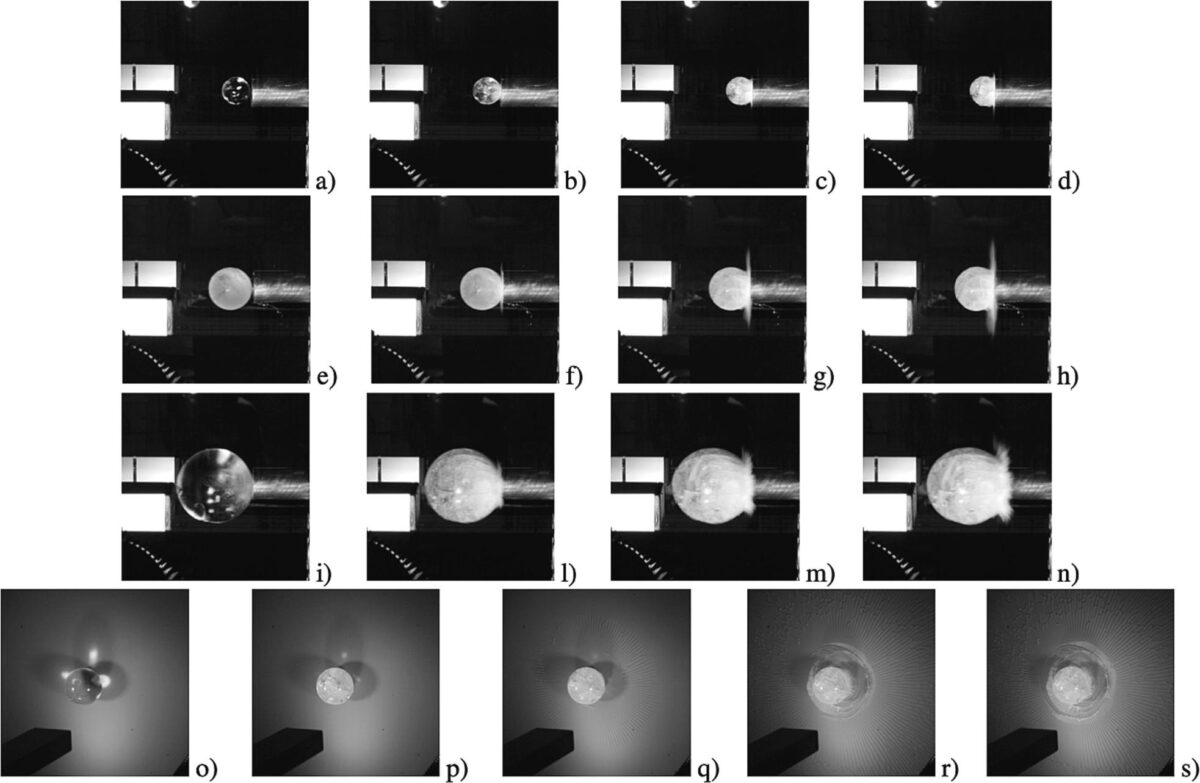Scientists at the University of Applied Sciences and Arts of Southern Switzerland have developed a novel hail test for photovoltaic panels that considers the impact of large, high-velocity ice balls.
The research team stressed that traditional hail tests conducted by the IEC 61215-2 standard usually assess the impact of ice balls with a 25 mm diameter and 80 km/h speed. It also said, however, that the Swiss Association of Cantonal Fire Insurers – the Vereinigung Kantonaler Feuerversicherungen (VFK) – established a minimum requirement of 30/40 mm and added that Switzerland's SUPSI PVLab is currently planning to create a hail test stand to reach 100 mm in diameter and 166 km/h in speed.
“The increase in ice ball diameter necessitates the evaluation of sample preparation, repeatability, and representativeness, as well as the ability to handle high speeds with high masses to reduce uncertainty in impact energy, as required by the Swiss standards,” the researchers said.
They utilized a Hopkinson bar, and a 30 mm aluminum bar to analyze the waveform resulting from the collision of the ice balls. They also used a strain-gauge station, a gas gun for ice ball acceleration, and a camera for fast image recordings.
The gas gun was designed to shoot ice balls with diameters of 25 mm, 40 mm, and 70 mm onto the Hopkinson bar. “A round plexiglass tube with different inner diameters was used to guide the spherical ice inside of it,” researchers explained. “To measure the velocity of the spherical ice specimens, a laser sensor was placed at the end of the tube.”
The academics shot the three balls at the same velocity and at two different frozen temperatures, −5 C and −20 C, to compare loading versus time response.
Popular content
Analyzing the samples having 40 mm diameters, they ascertained that the temperature decrease caused a double loading rate, which in turn caused a higher stress rate on the bar.
“In the case of 25, 40, and 70 mm ice balls at −20 C, peak forces are approximately 70%, 59%, and 44% higher than those at −5 C at the same velocities,” they further explained. “For 25, 40, and 70 mm, ice reaches its peak force in a shorter amount of time at −20 C, which is 30%, 21% and 2% lower than at −5 C.”
The analysis showed that lower temperature results in a higher peak force and a shorter peak time. “Using these preliminary results, the project will move forward with its future tasks, including the analysis of hail stone damage using a multispectral camera, the analysis of PV panels of different ages, ice mechanical characterization in the same strain rate range, and FEM modeling of phenomena,” the scientists concluded.
Their findings were presented in the study “Advanced characterisation of photovoltaics for hail resistance,” published in Materials Letters.
This content is protected by copyright and may not be reused. If you want to cooperate with us and would like to reuse some of our content, please contact: editors@pv-magazine.com.



1 comment
By submitting this form you agree to pv magazine using your data for the purposes of publishing your comment.
Your personal data will only be disclosed or otherwise transmitted to third parties for the purposes of spam filtering or if this is necessary for technical maintenance of the website. Any other transfer to third parties will not take place unless this is justified on the basis of applicable data protection regulations or if pv magazine is legally obliged to do so.
You may revoke this consent at any time with effect for the future, in which case your personal data will be deleted immediately. Otherwise, your data will be deleted if pv magazine has processed your request or the purpose of data storage is fulfilled.
Further information on data privacy can be found in our Data Protection Policy.